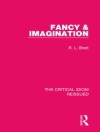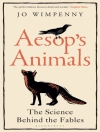Metaphors are ubiquitous and yet-or, for that very reason-go largely unseen. We are all variously susceptible to a blindness or blurry vision of metaphors; yet even when they are seen clearly, we are left to situate the ambiguities, conflations and contradictions they regularly present-logically, aesthetically and morally.David La Rocca’s book serves as a set of ‘reminders’ of certain features of the natural history of our language-especially the tropes that permeate and define it. As part of his investigation, La Rocca turns to Ralph Waldo Emerson’s only book on a single topic, English Traits (1856), which teems with genealogical and generative metaphors-blood, birth, plants, parents, family, names and race.In the first book-length study of English Traits in over half a century, La Rocca considers the presence of metaphors in Emerson’s fertile text-a unique work in his expansive corpus, and one that is regularly overlooked. As metaphors are encountered in Emerson’s book, and drawn from a long history of usage in work by others, a reader may realize (or remember) what is inherent and encoded in our language, but rarely seen: how metaphors circulate in speech and through texts to become the lifeblood of thought.
LaRocca David LaRocca
Emerson’s English Traits and the Natural History of Metaphor [PDF ebook]
Emerson’s English Traits and the Natural History of Metaphor [PDF ebook]
¡Compre este libro electrónico y obtenga 1 más GRATIS!
Idioma Inglés ● Formato PDF ● Páginas 408 ● ISBN 9781441175618 ● Editorial Bloomsbury Publishing (USA) ● Publicado 2013 ● Descargable 3 veces ● Divisa EUR ● ID 5348027 ● Protección de copia Adobe DRM
Requiere lector de ebook con capacidad DRM












